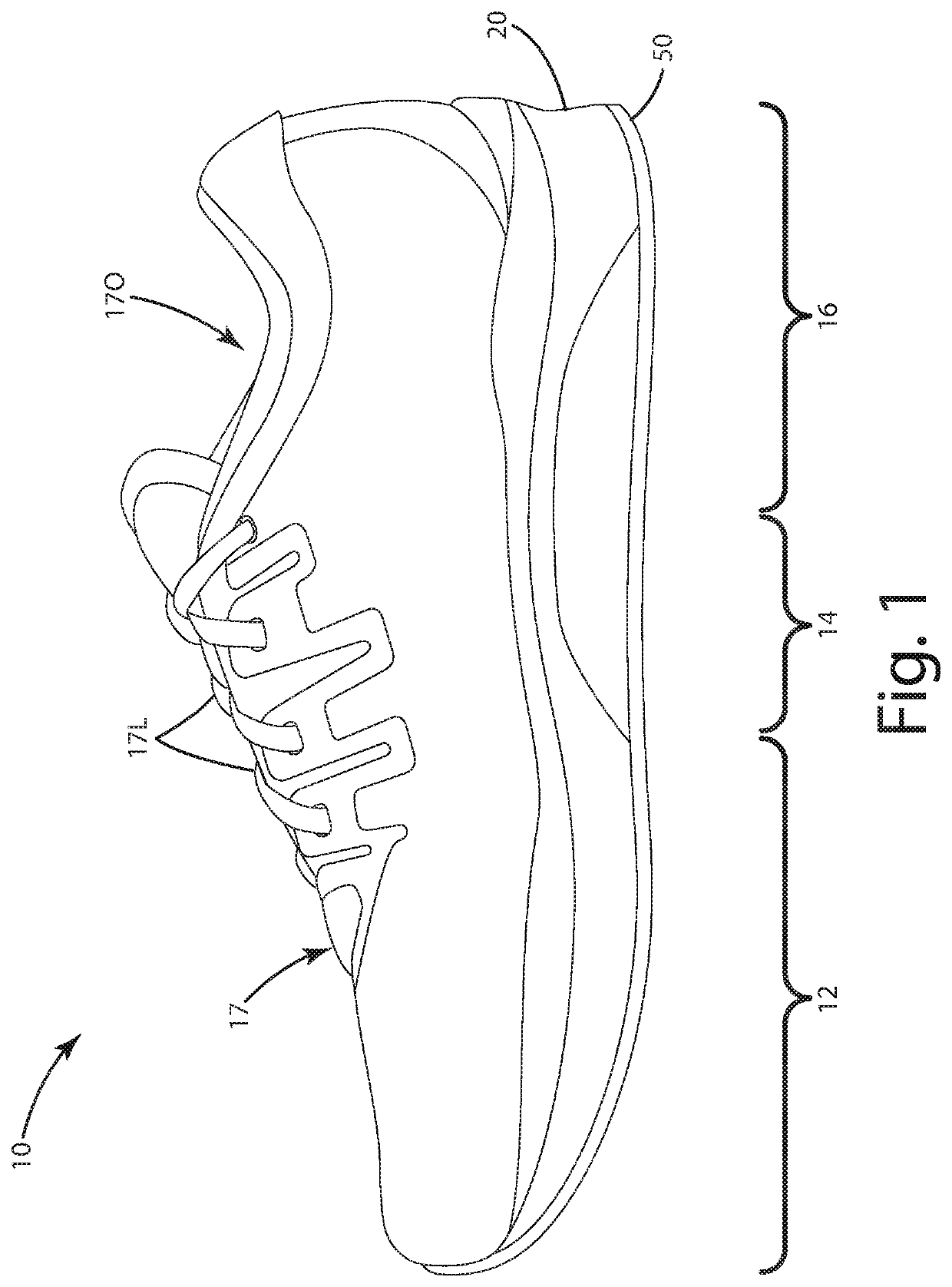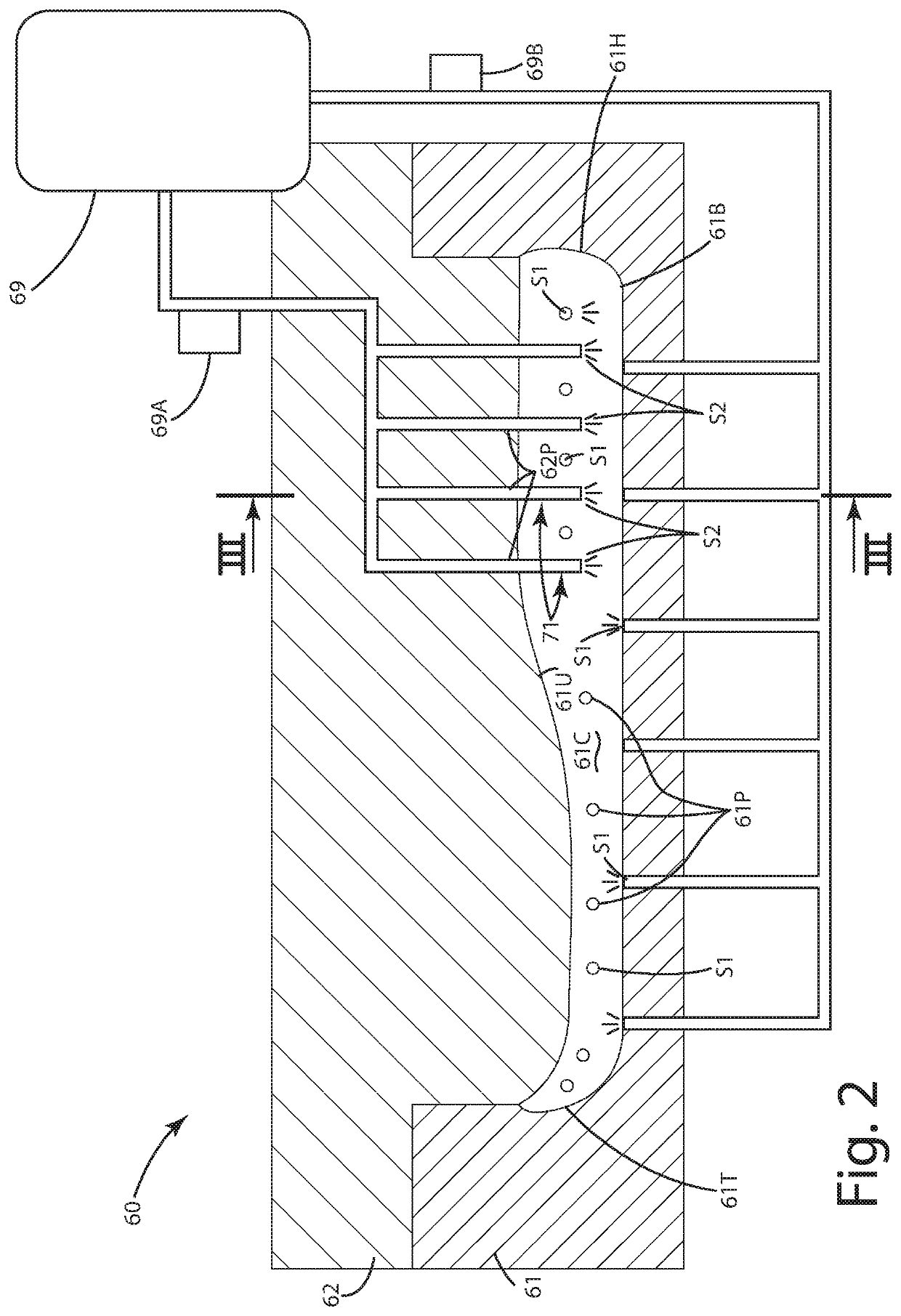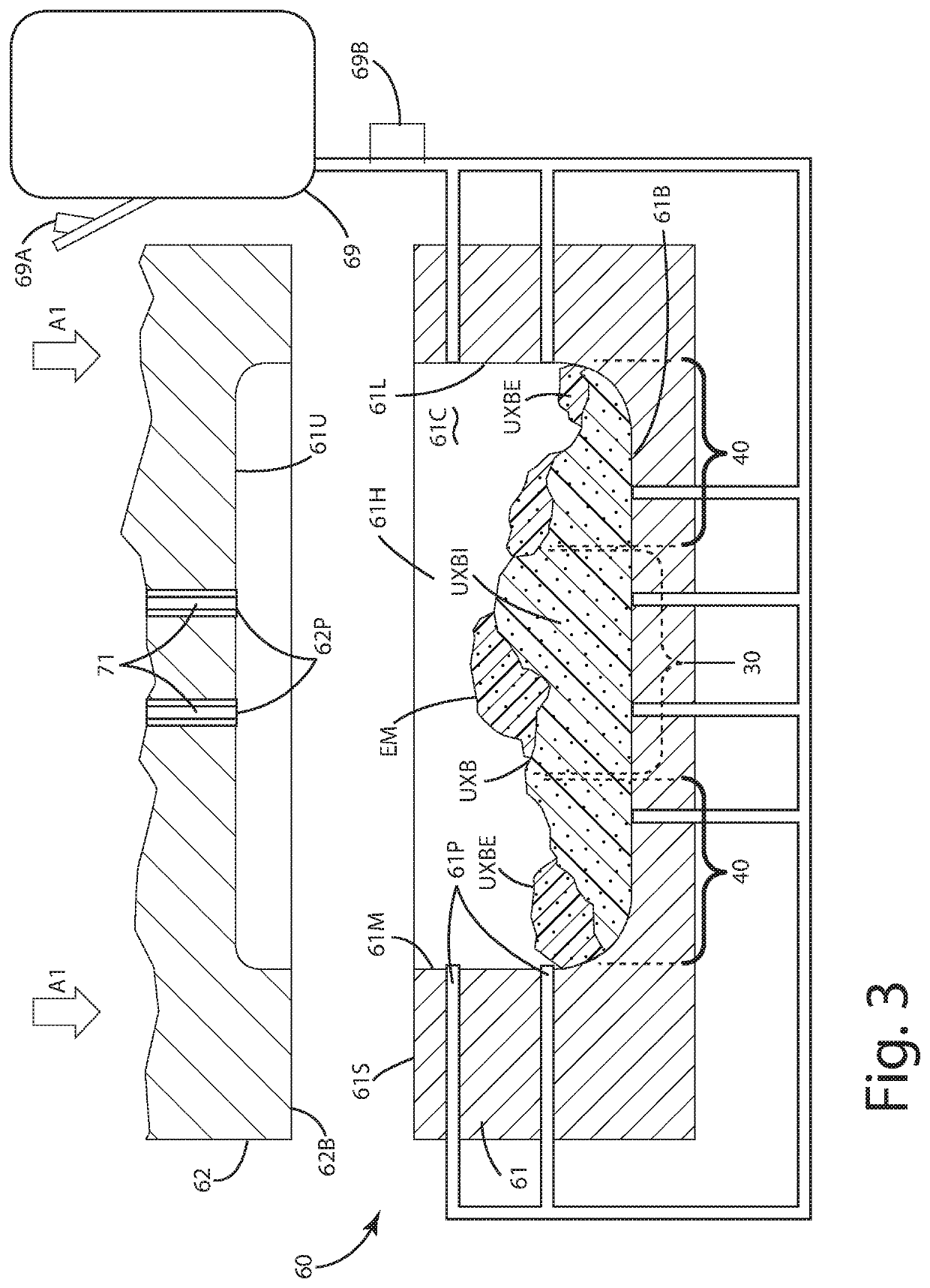Method of manufacturing footwear
a manufacturing method and technology for footwear, applied in the field of footwear, can solve the problems of not being able to expand well, or only partially, and the sole in this region feels harder and less flexible, so as to increase stability and/or support, and more density and rigidity. , the effect of less density and rigidity
- Summary
- Abstract
- Description
- Claims
- Application Information
AI Technical Summary
Benefits of technology
Problems solved by technology
Method used
Image
Examples
Embodiment Construction
[0031]A current embodiment of the footwear including a sole component manufactured according to a current embodiment is illustrated in FIGS. 1-11, and generally designated 10. The footwear can include a sole component 20, which is illustrated as a midsole, constructed from an expanded material, optionally in the form of expanded polyurethane (eTPU) beads. The sole component can be joined with an upper 17 and an underlying outsole 50. With the method herein, the expanded material in an internal region 30 can be expanded to a particular level, for example, the same as, less than or greater than, expanded material in an external region 40 of the sole component. On a high level, the method of manufacturing the sole component 20 can include introducing an expandable material EM including a plurality of unexpanded beads UXB into a first cavity 61C; projecting elongated pins 71 into the first cavity; introducing a first fluid S1 into the first cavity through first ports 61P; introducing a ...
PUM
| Property | Measurement | Unit |
|---|---|---|
| pressure | aaaaa | aaaaa |
| temperature | aaaaa | aaaaa |
| thickness | aaaaa | aaaaa |
Abstract
Description
Claims
Application Information
 Login to View More
Login to View More - R&D
- Intellectual Property
- Life Sciences
- Materials
- Tech Scout
- Unparalleled Data Quality
- Higher Quality Content
- 60% Fewer Hallucinations
Browse by: Latest US Patents, China's latest patents, Technical Efficacy Thesaurus, Application Domain, Technology Topic, Popular Technical Reports.
© 2025 PatSnap. All rights reserved.Legal|Privacy policy|Modern Slavery Act Transparency Statement|Sitemap|About US| Contact US: help@patsnap.com



